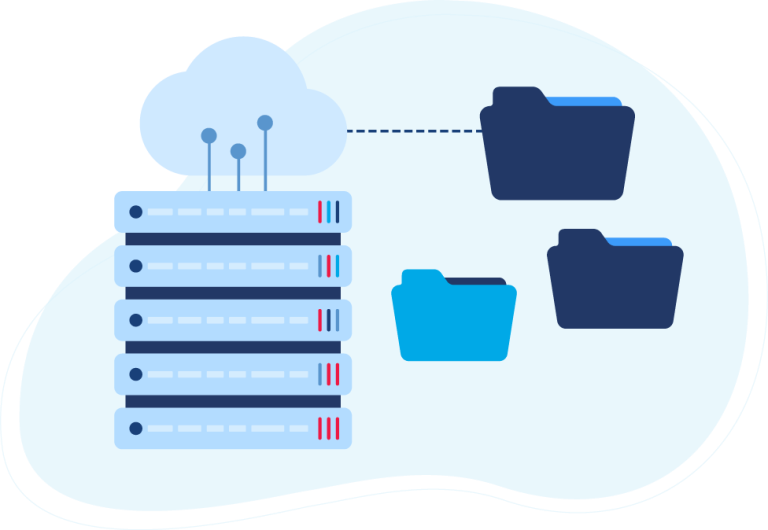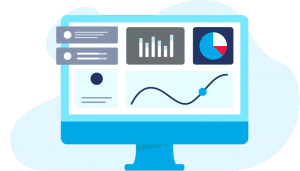Whether you are a manufacturer or distributor, understanding how to enter the B2B eCommerce world can be daunting at first. Where do you even start? In this comprehensive guide, we will walk you through eCommerce best practices, challenges, and key technology considerations for B2B growth.
What opportunities in B2B eCommerce exist today?
As eCommerce continues to play a key role in B2B operations, research forecasts that B2B ecommerce site sales will reach nearly $1.77 trillion in 2022. In fact, the statistics position B2B as more profitable than B2C in certain industries.
B2B vs B2C Ecommerce: What’s The Difference?
Merchants everywhere are beginning to see the benefits of adding B2B to their overall commerce stack. But B2B commerce is nothing like B2C.
Companies will need to strategically consider their reasons for getting into B2B selling. It is important to know how both B2B and B2C selling differ in customer expectations, buying cycles, technology, and more. It all starts by creating a thorough plan for long-term success.
Why B2B Ecommerce?
The first step in navigating B2B commerce is understanding your strategic reasons for implementing it. As a manufacturer or supplier, consider these factors:
- What are your strategic goals in the B2B space?
- Are you trying to tap into a new market or is B2B a significant profit centre for your business?
- How will your overall business strategy change once B2B commerce is introduced? Are you ready for a change?
The answer to these questions is as individual as your business is. Taking the time to work through those questions is an essential success factor to identify your goals in B2B eCommerce. Thus, you will understand what critical features and specific technology and applications are going to be needed for you to reach them.
Top B2B eCommerce Considerations
Here are a few key considerations to get started in the B2B world, whether you are new to the eCommerce, need to reinvent your B2B strategy, or want to discover growth hacks to expand your customer base:
1. Front-end Considerations
Front-end considerations are key to making B2B eCommerce work for your business. Just like in DTC commerce, the front-end of your website drives demand and sales online. It is imperative to choose the right eCommerce platform that will allow you to handle orders at scale and support all your back-end systems, applications with robust and cutting-edge API capabilities.
B2B eCommerce is often a large shift in thinking for most Merchants who are already DTC. In general, B2B online buyers will expect to see their price list, discount levels, and favoured shipping methods available through the front-end website. It is key to choose the correct eCommerce platform for your front-end website and its associated back-end applications and systems that will be compatible with the expected B2B experience.
What’s a good B2B eCommerce platform?
While choosing a B2B eCommerce platform can seem daunting, the key is to look for features that allow you to drive sales and fulfill orders with agility, no matter where your buyers are.
Although Shopify and BigCommerce are some of the most popular eCommerce platforms in the market today, B2B sellers need to consider functionality and features that will make sense for their business.
Before implementing a solution, look for the following in a B2B eCommerce platform:
- Functionality to allow custom pricing and discounts for specific customers and customer segments
- The ability to integrate customer data from your ERP to the platform through APIs
- Platform functionality that allows B2B customers to buy, track, and reorder products easily
- Have the ability to sync inventory, orders, customers all in one place
- Easy set up of payment methods that mirror your business practices
2. Back-end Considerations
The back-end to the B2B experience involves applications and systems that feed and receive data from the front end. Many merchants are still using legacy back-end systems not intended for omnichannel eCommerce use. They often lack the necessary technical interfaces such as APIs or even different file types to be able to push and pull data.
The back-end considerations are absolutely crucial, as it is where all the heavy, functional lifting occurs. The interfacing with the back-end must be strategically thought out. This includes having all other applications integrated and automated to work together so the whole business can run smoothly and efficiently.
Which are the best B2B eCommerce solutions?
While B2B commerce is at its peak, sellers have a limited suite of solutions to choose from. B2B requirements are tough to meet so it is essential to rely on the expertise of commerce leaders.
Some sellers often take the long route to rely on solutions with basic functionality that are feasible but not long-term. This leads to more expensive investments and needs to customize features every time.
In the contrary, other manufacturers and distributors are turning to third-party vendors and applications for expertise. These are often specialists that will enable sellers to manage inventory synchronization, order fulfillment, pricing, transactions, and more. Some solutions to consider are an ERP, PIM, 3PL, and other systems.
Integration of Key B2B Systems
To unify multiple systems, an integration provider that understands your business and needs is key. Part of navigating the complex world of B2B commerce is consulting with agnostic experts like VL OMNI who can recommend solutions and in partnership develop a strategy that has the capability that helps you reach your goal.
Our managed service and platform powers pre-built connectors for B2B integration, focusing on unifying customer orders, ERP/Accounting, POS, or 3PL to increase efficiency and eliminate costly manual processes and errors.
In 2022, Merchants will continue prioritizing tech investment like cloud integration to unlock growth. VL OMNI will provide you with strategic results consistently over the lifetime of your eCommerce integrations.

What back-end technology stack do you need?
B2B buyers want B2C-like experiences when shopping. Download our complete B2B guide to learn how to choose your tech stack. Check out the technology solutions that power growth for the most popular brands across the globe.
3. Customer Data
A large consideration for B2B commerce is having a deep technical understanding of your customer data. Where it lives, where it comes from, and where it should be held within your tech stack to ensure it is moved accurately and efficiently across your applications and channels.
Taking the time to map out that customer data in great detail will help inform your business how to create a great customer experience. Having clean and correct data is simply the first step.
Moving that data to where it needs to be on time and at scale, allows your strategic customer experience to flourish. Customers who shop from you through B2B and DTC should have the same seamless customer experience when purchasing from your business, and strategic integration is the way to achieve this.

4. Pricing
Pricing is often overlooked in B2B integration and it requires the most consideration. B2B pricing structures are often completely different and more complex than B2C. In fact, there are typically only two price points in B2C: a selling price and a sale price. B2B is often very different.
The first thing to do is to strategically understand and build out your pricing structure that aligns with what the front-end can handle. If your business has multiple price lists, being aware of where that data lives and where it needs to go within your technology stack is essential to smart integrations. Often in the B2B space, the product offerings are customer-specific, this adds another layer of complexity and will need to be considered on how product restrictions will impact the customer experience on the front-end of the website.
Remember, the complexity of your pricing structure will determine how difficult it will be to integrate to the front-end of your website.
5. Fulfillment
The second act of eCommerce is, of course, fulfillment. Just like DTC, last-mile fulfillment and delivery are key to a successful customer experience. One consideration to take into account is visibility. Just like DTC, customers want to be able to see where their purchases are. Make sure to have end-to-end visibility on inventory at all times.
Simplify Order Placement in B2B eCommerce
This requires deep integrations that are connected to the correct systems, accessible to all key staff members, enabling them to assist customers with any questions they may have.
When doing both B2B and DTC, order volume at scale will become a concern. Having multiple suppliers and inventory locations will help with the increased demand.
A Look Into the Future of B2B eCommerce
The future of B2B commerce looks promising but the B2B world can be a complex and complicated environment to sell in. With the right preparation and strategic planning, you will grow your business for the long-term. In the end, the most important aspect to keep in mind is the overall customer experience.
Be sure to allocate funds wisely across your front-and back-end systems, as well gaining expert consultation with a managed service provider that will keep your business rules and strategic goals in mind for the long-term.
FAQ
How do B2B portals help suppliers?
A B2B portal gives customers a dedicated space to engage with your business. It provides easy access to your product range, lets users track their accounts, and engage with loyalty-driven promotions. It also allows your sales staff and marketing team to interact with B2B consumers, suppliers, and distributors — in a more agile and efficient way.
However, this isn’t suitable for all companies. Indeed, for some business models giving consumers access to their own sales portal can overcomplicate matters. In our B2B sales portal article, we dive into all the aspects to consider before investing in a B2B portal.
 D365 Business Central
D365 Business Central Netsuite
Netsuite






